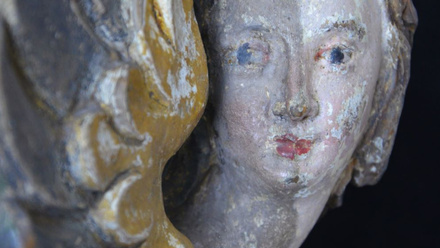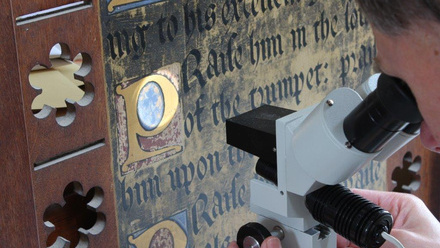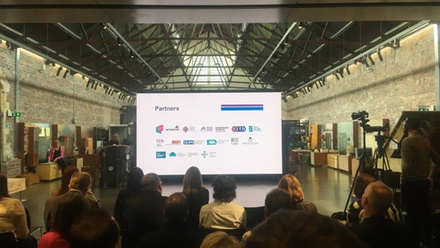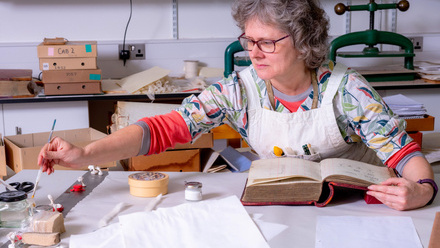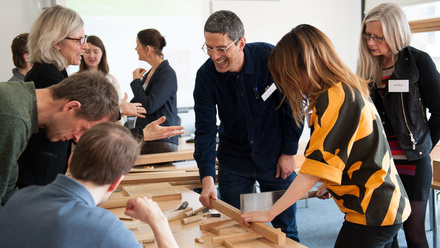Icon's Impact: Apprenticeships for the Conservation sector
Over the last few years the Government’s spotlight has been on reshaping the vocational education landscape, ensuring that the needs of candidates and employers are met, and that formal vocational training genuinely helps prepare people for the jobs market. These various reviews have resulted in the developments of a range of programmes, including: Trailblazer Apprenticeships, T-Levels as well as a significant shake-up in the funding landscape with the introduction of the Apprenticeship Levy.
People have always entered the conservation profession through a hands-on vocational route. Historically pathways have varied greatly depending on the specialist area of conservation and have often been driven by highly dedicated and passionate individual employers.
Goal
The introduction of Trailblazer Apprenticeships alongside the shift in the funding landscape presented a clear opportunity to formalise the vocational entry routes into the profession. Our aim was to ensure that what was developed worked for the whole sector and that Icon’s Professional Standards were clearly embedded.
Task
In 2016 we joined the Historic England led ‘Historic Environment’ Trailblazer Group who were working on developing a single heritage sector apprenticeship. We agreed that the best way to support conservation would be to have something more specific to us - the other organisations involved felt the same - and so the group split into three. Icon took ownership of developing apprenticeships for conservation.
Actions
- Building the employers group: We brought together an employer group through a callout to members. This ensured that group represented the sector and included a broad range of specialisms as well as private, public and national employers.
- Identifying areas for development: Apprenticeships need to match to real job roles which are common across the sector, as such we agreed to develop two apprenticeships, Conservation Technician and Conservator.
- Assessing general / specific apprenticeships: Rather than developing dozens of niche apprenticeships, we agreed that it was better to develop apprenticeships that were closely aligned to Icon Accreditation and therefore focussed on the underpinning skills of conservation professionals.
- The ‘Level’ of the offer: If was to be successful, we had to ensure that an Apprenticeship would be of equal value as classroom-based qualifications and deliverable in practice. Therefore, we agreed that the Conservation Technician apprenticeship would be at Level 4 and the Conservator apprenticeship be a Level 7 Degree Apprenticeship, meaning that apprentices would have to complete an MA or MSc in Conservation as part of their apprenticeship.
- Developing Assessment Plans: We developed the assessment plan for the independent end point assessment, which all Apprentices must pass before they can be officially signed off as having completed.
Outcome
The Level 4 Cultural Heritage Conservation Technician and the Level 7 Degree Apprenticeship for Cultural Heritage Conservator were fully approved by the Institute for Apprenticeships in April 2019. Icon has also been approved as an End Point Assessment Organisation.
Learning
We’re absolutely delighted that we’ve managed to get to new apprenticeships approved. We have learned lots from our work. Here are some of our reflections:
- Being pragmatic early on helped us understand and agree the need to split into individual working groups to achieve meaningful results.
- Regularly reviewing where we were meant we could be realistic and plan what we needed to achieve, particularly when we were relying on so much support from other professionals to draw everything together.
- Not being scared to ask for help. We had great support from assessment managers within the Institute for Apprenticeships, whose input and willingness to provide support really helped move the approvals process on rapidly.
- Working collaboratively. Combining the input of members, Icon’s Professional Standards Development Committee and the education sector ensured that the Apprenticeships represent the sector’s needs and can be delivered in practice.
Next Steps
- Supporting Universities and Colleges as they get ready for delivering the apprenticeship.
- Using what we’ve learned to support the development of vocational education opportunities in other parts of the UK.
- Helping our members understand how apprenticeships can be used as part of a clear and well-structured training opportunity for new and existing staff.

